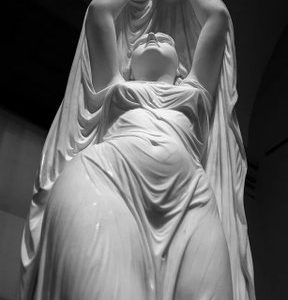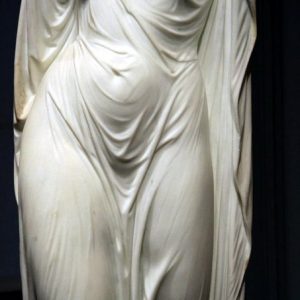Impression, Sunrise” stands as an emblematic masterpiece within the Impressionist movement, showcasing Claude Monet’s exceptional ability to encapsulate an ephemeral moment of natural splendor within an industrialized milieu. Crafted in 1872, the painting immortalizes the harbor of Le Havre in France at daybreak, featuring a sun veiled in mist rising above the tranquil waters, accentuated by the silhouettes of ships. Monet’s distinctive technique involves employing broad, loose brushstrokes and a limited color palette, imbuing the scene with a vivacity that suggests the spontaneity of capturing an immediate visual impression. This artwork also epitomizes Monet’s fascination with exploring the interplay of light and atmosphere upon landscapes, as he ventured into portraying diverse times of the day and varying weather conditions.
The artist’s deliberate use of loose brushstrokes imparts a sense of movement and dynamism to the canvas, allowing the scene to pulsate with life. Monet’s intention appears to lie in capturing the essence and fleeting nature of the moment, rather than meticulously rendering every minute detail. The evocative portrayal of the harbor, bathed in a haze of dawn’s soft light, conveys a sense of tranquility and ethereal beauty that transcends the ordinary.
Upon its unveiling at the inaugural Impressionist exhibition in 1874, “Impression, Sunrise” encountered a diverse spectrum of responses from critics and spectators. Some hailed its innovative style and poetic resonance, acknowledging its departure from the conventional norms of detailed realism prevalent at the time. However, others were less receptive, criticizing the painting’s seemingly unfinished appearance and lack of meticulous detail. Notably, the coinage of the term “Impressionism” stemmed from a critic’s caustic remark, dismissing Monet’s artwork as merely an “impression” rather than a refined and complete masterpiece. Yet, intriguingly, Monet and his contemporaries embraced this label, utilizing it as a catalyst to further explore innovative ways of encapsulating their personal interpretations of nature and contemporary urban life.
Monet’s groundbreaking approach to artistry, exemplified in “Impression, Sunrise,” transcended the conventional paradigms of academic painting. By eschewing precise details and instead focusing on the essence of the moment, the painting heralded a paradigm shift in artistic expression. Its significance lies not merely in its visual portrayal but also in its pioneering role in altering the trajectory of artistic representation.
Moreover, the painting’s historical significance extends beyond its aesthetic appeal. It serves as a testament to the Impressionist movement’s quest to redefine art, challenging the established norms of the art world. The artists associated with this movement sought to capture the transient qualities of light, atmosphere, and fleeting moments, thereby forging a new artistic language that celebrated the subjective experience of the individual artist.
“Impression, Sunrise” remains an enduring symbol of artistic innovation and a cornerstone of Monet’s legacy. Its profound impact on the art world reverberates through time, inviting viewers to appreciate not just the visual beauty of the scene but also the revolutionary spirit that it embodies. As a harbinger of a new artistic era, this painting continues to inspire contemplation, discussion, and admiration, reaffirming its place as a masterpiece that transcends the boundaries of its era and resonates with audiences across generations.













